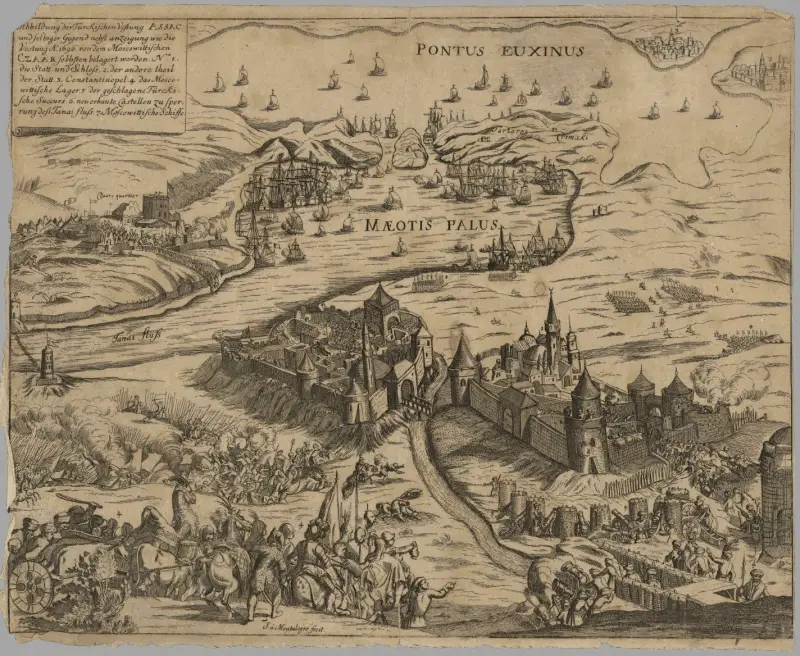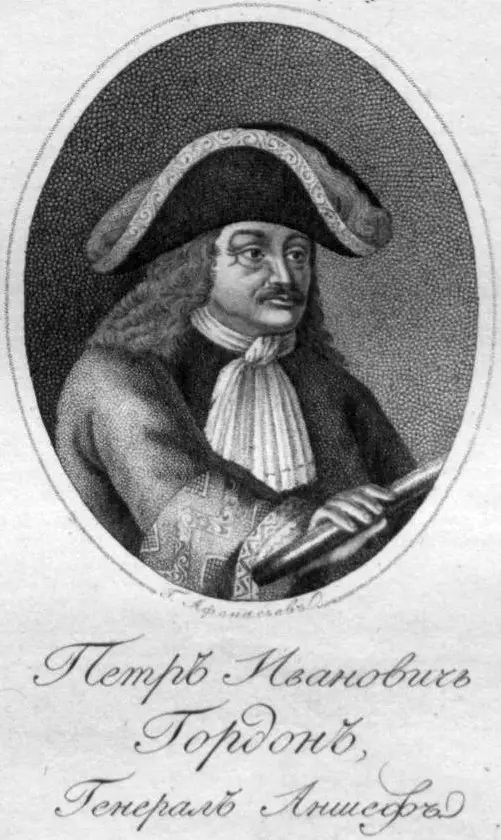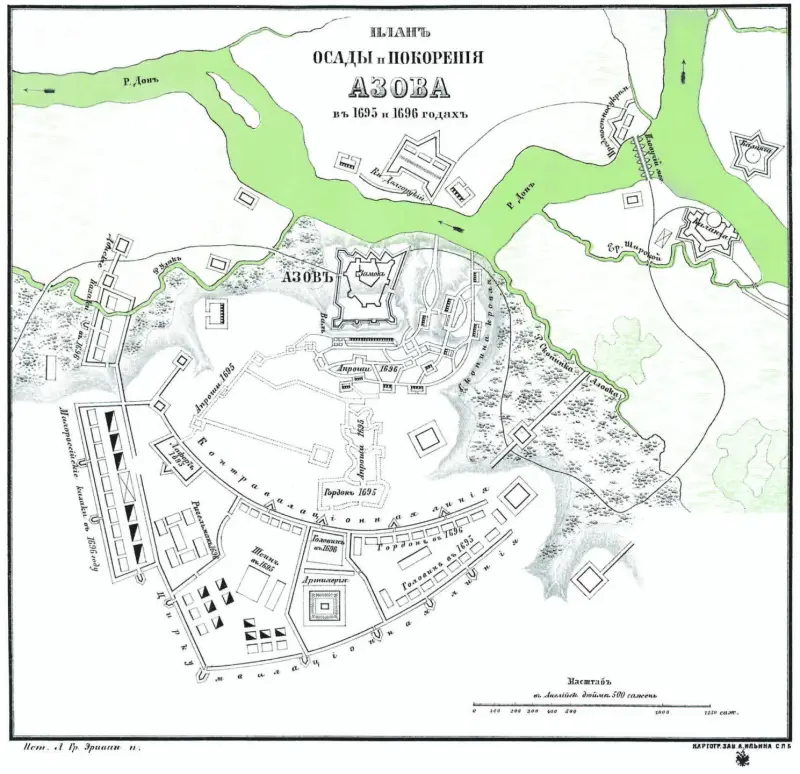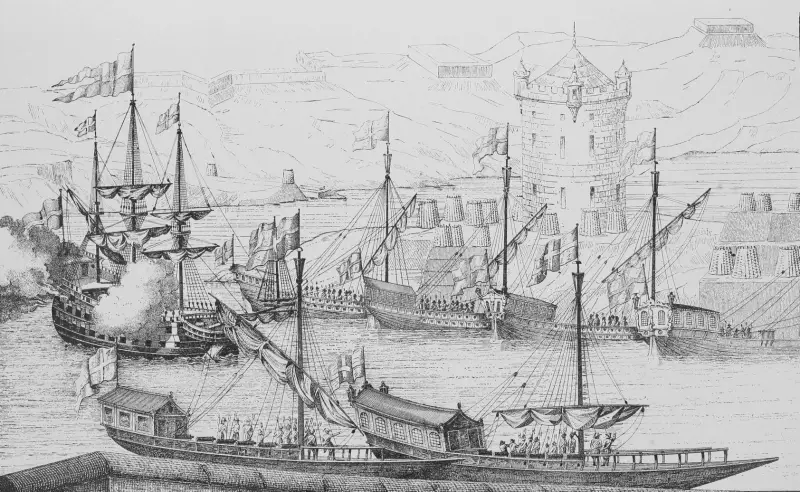Azov campaigns of Peter I: how the tsar learned from his own mistakes

Initially, Peter planned to make a trip to Crimea. But he remembered Golitsyn’s unsuccessful campaigns; his campaign in Crimea could have turned out no better. In addition, it was impossible to feed a huge army in the waterless expanses. Both the intense heat and the steppe scorched by the Tatars played a decisive role. Hundreds of horses died from lack of food; thousands of soldiers died from poor nutrition, heat, thirst and disease without ever engaging in battle with the enemy. Even if the army takes Perekop and invades the peninsula, thirst and heat will complete their work, and the army may find itself trapped.
For these reasons, Peter decided to strike not at Crimea, a vassal of Turkey, but directly at Turkey, at the well-fortified fortress of Azov, which had access to the Sea of Azov. And access to the sea was necessary for Peter, who dreamed of building a fleet.
The purpose of the campaign was kept in the strictest confidence, but the Turks nevertheless learned about the direction of the attack and increased the garrison of Azov.
Troop training began in January 1695. 31 people were allocated to take the fortress, while the main forces, 000 soldiers and Cossacks, were supposed to operate in the Dnieper direction. Their goal was to reach the mouth of the Dnieper, capturing Tatar fortresses. The Tatars left weak forces against them, most of them went to defend Azov.
The first hike
At the end of April, preparations were completed and the 31-strong army set out on the campaign. The forces moving to Azov were simultaneously commanded by three military leaders - Gordon, Lefort and Golovin, but there was no single commander-in-chief. Gordon's detachment (9,4 thousand people) walked overland; its transition, instead of the planned three weeks, dragged on for two months. The detachments of Lefort and Golovin (22 thousand) moved by water along the Don. Golovin’s detachment included the Preobrazhensky and Semenovsky regiments. In the Preobrazhensky Regiment, one of the companies was commanded by bombardier Pyotr Mikhailov, that is, the Tsar himself.

General Gordon
On June 26, the troops reached Cherkassk, and only on July 5 did they reach Azov and begin the siege. The troops took two fortifications next to the fortress, which were called towers. However, the siege of the fortress was carried out ineptly; the Turks easily repelled several assaults. Azov was thoroughly fortified: surrounded by high and thick walls, in front of which stood an earthen rampart, then followed by a ditch with a wooden palisade, and three miles from Azov on the banks of the Don there were two stone towers, between which three iron chains were stretched so that Russian ships would not were able to go to sea.

Plan for the siege and conquest of Azov by the Russian army in 1695 and 1696.
During the siege, the Turkish garrison received reinforcements, ammunition and food by sea. Often the Turks made forays and inflicted great damage on the Russians. The Dutch sailor Jacob Jansen, who was in Russian service, ran over to the Turks and informed them that the Russians usually went to rest after lunch. During the hours of such rest, the Turks made another sortie and killed several hundred Russians. General Gordon barely managed to repel the attack.
On August 5 a general assault was launched. Strong artillery fire did not make a hole in the wall, and the Turks repulsed all attacks by the Russians. Several more assault attempts occurred in September, but they were also unsuccessful.
The main reason for the failures of the assaults was the uncoordinated actions of the attackers, thanks to which the Turks always managed to regroup their forces. Since the cannons were unable to penetrate the wall, the Russian command decided to blow it up with a mine. But the work was carried out so ineptly that many of their own soldiers died from the explosion, which did not destroy the wall.
Seeing the futility of further assaults, on September 27 Peter ordered the siege to be lifted and to return.

Portrait of Franz Lefort from the late 17th century
However, the failures of that campaign did not end there. The soldiers began to suffer from hunger, as the contractors did not provide the army with food and disappeared with the money. While crossing the Don, the river overflowed and many people drowned. But that was not all. In October, early winter began, from which the soldiers in summer uniform suffered extremely.
Such a failure would have broken many, but not Peter. And the lesson was really hard. But the tsar did not try to pass off this defeat as a victory, as Sophia did after Golitsyn’s unsuccessful campaigns. He tried to find the reasons for the defeat, and there were many of them. One of them is the lack fleet, because a sea fortress must be blocked both from land and sea. Other reasons for failure include poor engineering training, poor training of troops and the control system. Peter set about correcting the mistakes.
Instead of three army leaders, he appointed two and assigned each to control a certain type of troops. Voivode Alexey Shein began to command the ground forces, and Lefort was entrusted with command of the not yet built fleet. None of them were distinguished by military talents, but Peter had no other choice then.
Preparations were underway for the second campaign. To increase the size of the army, the king announced that everyone could take part in the next campaign. Crowds of Moscow serfs immediately began to come to Peter, who, after joining the army, received freedom.
Peter paid special attention to the construction of the fleet. After the death of his brother Ivan in January 1696, Peter went to Voronezh, where a fleet was built during the winter and spring. He personally takes part in the construction: he, like everyone else, works with an ax and supervises the work. Last year's mistakes were taken into account, everything was ready for the new campaign.

Russian fleet near Azov
The second campaign
At the beginning of May, the army and navy moved south again. At the end of the month they approached Azov and began a siege. The Turks could not even imagine that the Russians were able to build a fleet in such a short time. Therefore, their ships headed to the fortress with the goal of landing troops and supplying the besieged with ammunition and food. Imagine their surprise when they saw many Russian ships in front of them!
On May 20, Cossack boats attacked the Turkish fleet of 13 large ships and many small ones. After a stubborn battle, the Turks were forced to retreat. This was the first naval victory of the Russians. A month later, on June 28, the entire Russian fleet went to sea and saw the enemy in the distance. The Turks, who were planning to land troops, did not dare to engage in battle, seeing the numerical superiority of the enemy. They retreated without a fight and made no further attempts to save Azov.
On July 17, an assault followed, which the Turks repulsed with great difficulty. The next day, the garrison of the fortress, fearing further assaults and abandoned by their own to the mercy of fate, capitulated. Under the terms of surrender, the garrison (3700 people) and all residents left Azov. The commandant also agreed to hand over the defector Jacob Jansen, who was subsequently imprisoned on the wheel. The Russian army entered the fortress, which until recently seemed impregnable, of which now only ruins remain.

Capture of the Azov fortress in 1696. Engraving from the end of the XNUMXth century.
Not far from Azov, Peter chose a good place to build a seaport. There the construction of a city began, which was named Taganrog. According to Peter's plan, this city was to become the largest seaport. However, the city, located on the shallow Azov Sea, had practically no chance of becoming a major port. In addition, the Turks completely controlled both the Kerch Strait and the Bosphorus.
In the same 1696, by order of Peter, a triumphal arch about 10 meters high was built in Moscow, through which the winners passed. Peter's ceremonial entry into the capital took place with fireworks and gunfire, not at all the way victors were greeted in former times. The people did not understand this innovation and, instead of rejoicing, remained silent.
Peter understood perfectly well that the Turks would not accept the loss of Azov, so measures were taken to hold the fortress. It was constantly maintained by a garrison of 3000 infantry and 400 horsemen.
New ships continued to be built in Voronezh. Many craftsmen were sent from Western Europe, and crowds of peasants were forcibly brought in for construction. Of course, with all this, a number of new difficulties arose: peasants fled en masse, and foreigners often treated their work negligently.
Obviously, Peter at that time expected to fight with Turkey for a long time. He could not then imagine that after some three years all his attention would be occupied by the war with the Swedes, and the fleet built with such difficulty in Voronezh would simply rot in a couple of decades, having taken part in major battles. As for Azov itself, Peter will be forced to return it to the Turks after the defeat in the Prut campaign in 1711.
Information